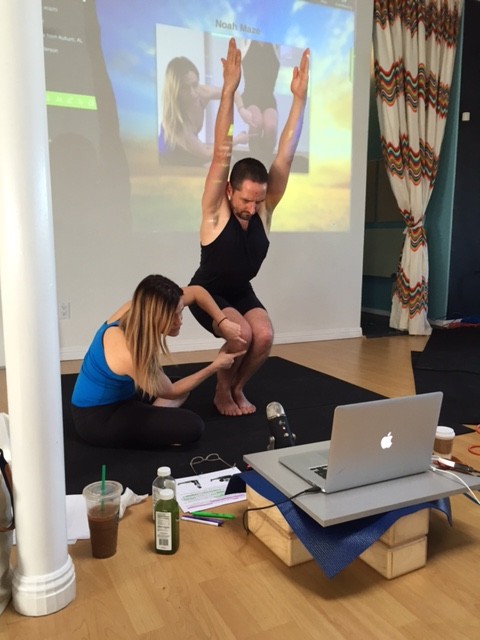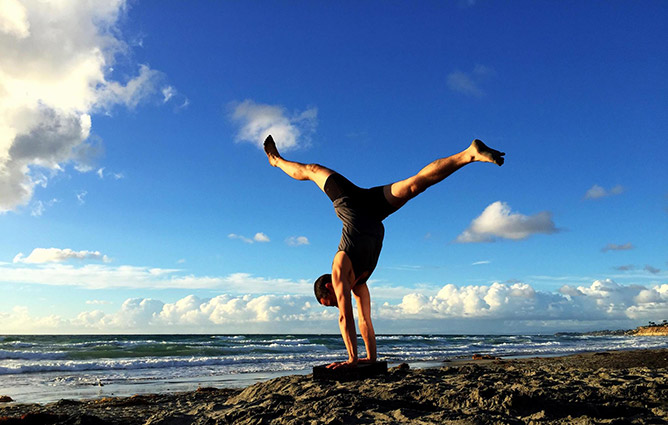Anatomy Learning Curve
Teaching anatomy and the science behind movement is personal for me. I’ve spent half my life studying it, and a quarter of my life sharing what I know with others. Having this body of knowledge creates a sense of responsibility for me to deliver trustworthy information to the yoga community. Having quality information will deepen your own practice and positively influence others you are teaching. In my last blog post I touched upon how to begin approaching and integrating the complex subject of anatomy. If you haven’t had the chance to read that blog, click here.
I began to travel down the path of The Mazé Method a few years ago to see where it would take me. Like approaching a new hiking trail, it felt natural for me to let curiosity take over and guide those first unknown steps towards a new destination. Little did I know where this path would take me, and lately my journey on this trail has been filled with personal and professional growth beyond what I first imagined. My recent expedition down the The Mazé Method path began with a passionate discussion between Noah, Tracy and myself. We quickly outlined the blueprint of the online anatomy curriculum that we were ebullient to launch for The Mazé Method. Through the process of brainstorming, it was clear to us that we couldn’t offer only ONE class. Teaching anatomy in one course is analogous to teaching the Bhagavad Gita in the first few minutes of a yoga class. And much like a good mythological tale, we settled on starting the The Mazé Method anatomy curriculum in the middle of the story. We launched Anatomy 101 and Anatomy 202 at an intermediate level, bringing college level content to our online students.
So, why start in the middle of the Anatomy story to launch our first online course? Well, it allows for more advantages than disadvantages. Presenting these courses online allowed us to offer an abundance of material, unrestrained from the limitations of a live intensive. We knew most people signing up for the class had some exposure to anatomy before, and we wanted to illustrate a theme that consistently comes up in yoga… there is always more. Anatomy 101 reviewed familiar content for those exposed to some anatomy, and built more information around that foundational infrastructure. With Anatomy 202 we wanted to expand that knowledge and integrate anatomy with kinesiology and biomechanics. This starting point allowed us to gage what information was lacking within the yoga community. After we completed the recordings, it was clear that we needed to expand our anatomy content full spectrum at The Mazé Method. So, stay tuned for more courses coming down the The Mazé Method pipeline!
Our starting point gives you an advantage as well. Our current course offering allows you to decide what level you need to fill the gap of your own anatomy knowledge. That said, after writing each section of content, I knew it was going to overwhelm the audience at times. It’s hard not to overwhelm everyone, when the authors themselves are also experiencing the same tidal wave with you. I wanted to push the audience intellectually because I know you are all capable of understanding the material. I also knew these courses were being recorded. The luxury of the online format is you can watch lectures multiple times over weeks or months. It gives you the opportunity to sit back, relax, and take in the story of the body before studying it in more detail. We concluded our live recorded sessions several weeks ago, yet the dialogue continues to be interactive on the Facebook forum for those enrolled in the class. I still read the posts and reply to them when time allows. For any of you enrolled, please continue to ask your questions!
Collaborating with Noah on this project has been an amazing and unique experience. We share similar motivations as educators. We both push boundaries, expect a lot from our students, expect a lot from ourselves, and always remember have fun during the process. Teaching to the yoga community brings a particular joy because the students are all very intelligent, eager, self motivated, curious and willing to participate in an ongoing dialogue. The teaching challenge I was presented with was speaking to an online community of people I couldn’t see, but I could interact with. It was new ground for me, but I had a lot of support and guidance from my co-teacher Noah. Teaching in person allows its own comforts. The audience is there, they are tangible, and they are very interactive. It is an organic experience that can take a life of its own based on those participating. The downside to the live experience is that some can feel left out of the discussion, or intimidated to ask questions (If this is a familiar sensation for any of you reading this, I suggest you joyfully step outside of your comfort zone and ASK your questions! Usually there are a few others in the room thinking the same thing you are. Clarity is good, even for those who may be more experienced with the material.) The other downside is one can not cover all the material that exists out there in a day or three days. Questions can create tangents given the dynamic nature of a live course. Tangents slow some of the outlined agenda down, but they are also a benefit because they provide a unique learning experience. Overall, teaching live has many benefits. It plays into all learning styles of seeing, listening and doing. And, the students make space and time in their busy lives for higher learning to occur.
Hopefully this blog will help ignite an interest in you to continue learning, regardless of the subject matter. I’ve spent many years studying the body. New information comes out daily, and I am still in awe of how intelligently designed we are. Even with all the education under my belt, I always feel like there is so much more to learn. I love that feeling. It is humbling, motivating, and inspiring. If you are interested in learning from us at The Mazé Method, I encourage you to enroll in our anatomy curriculum, come to our Anatomy Intensive this June, and look for our upcoming courses. Noah and I are currently collaborating together for Asanatomy – a course designed to help you apply anatomy as a teacher into your adjustments, sequences and cuing. On the opposite end of the spectrum, if you feel overwhelmed by anatomy, check out our Anatomy Primer course starting soon that will start you on a simplified and approachable path to Anatomy. Lastly, look for a monthly blog posting from me featuring current research being done with yoga in the scientific community. I will feature one evidence based research article a month, examining the research, why it is either a good or bad study, what the real results are, and how to apply this new information in your yoga class. Until next time I leave you with this contemplation, “Let us tenderly and kindly cherish, therefore, the means of knowledge. Let us dare to read, think, speak, and write” – John Adams.
Namaste,
Paula
Dr. Paula Gelbart, DPT is a licensed and practicing Physical Therapist, and the owner of Align Physical Therapy in West Hollywood. Dr. Gelbart presents yoga and anatomy training programs around the world, and is currently apprenticing at The Mazé Method, and leading anatomy and yoga methodology workshops alongside Noah Mazé for The Mazé Method, worldwide. Dr. Gelbart received her doctoral degree in Physical Therapy from Mount St. Mary’s College, and has been rehabilitating human bodies for nearly 10 years. She holds various additional medical/therapeutic certifications, including in Neurac (Red Cord), CranialSacral Therapy, Pilates, Core Align, and Visceral Manipulation. Dr. Gelbart completed her undergraduate degree in Biology from the University of California Santa Barbara. In past years, she has served as a clinical coordinator at at a major los angeles conditioning center mentoring incoming physical therapy interns through their last rotations before graduation. Dr. Gelbart is also a former instructor of “Anatomy and Movement Fundamentals” for Pilates certification curriculum.
Dr. Gelbart currently serves as a contributor to The Mazé Method’s growing anatomy programs and curriculum. She received her 500 hour yoga certification through The Mazé Method under the direction of Noah Maze, and is registered with Yoga Alliance at the 500RYT level. She has extensively researched and studied yoga anatomy, spending time with teachers including Leslie Kaminoff, Martin Kirk, and Dr. Ray Long.




